Diploma 2014: "Nøstet & Nøstegaten 39-45B" by Joakim Myklebust
I am working on the theme of cultural development and potential of listed buildings for district and
building planning at Nøstet in Bergen. My motivation is to challenge dogmas and an approach
to city planning that I experience as lacking visions, understanding of consequences and a conscious
attitude towards resource optimization.The aim is to participate in the public discussion
regarding the district Nøstet in Bergen, providing a critique of the current plans and an alternative
vision.
Nøstet is an area in Bergen consisting of Norway’s oldest built urban environment of wooden houses. It
used to be an area for trading rough goods like sand and wood and the areas around Nøstegaten held
clusters of brothels in the mid 19th century. During the last years the buildings have been used as
restaurants, mosque and exhibition space. The buildings are listed and will be restored to an idealized
condition based on their condition in the start of the20th century.
The listing includes formal criteria such as building components older than 1650 as well as preservation
of the built urban landscape. The latter consists of a continuous façade row of urban wooden houses
along Nøstegaten that mirrors Nøstet’s historical sea border and the porous structure seen in plan, providing
access to the sea through alleyways. These were multifunctional and had overlaying layers of social
life, work, storage and access that also accounts for a social aspect of listing.
Referring to morphological terminology, the historical built environment has a certain rhythm, scale,
self-similarity, organizational depth, time, continuity and break in material use and expression of function
and identity that may only relate to subjective interpretations, and does not belong to the formal listing
status but are important features to be discussed.
This project does not relate to the superfcial or mimicking aspects of form but finds its sense-making
claim in the structure of the urban grid and landscape, social structure and use/program. In this
project I oppose the pure formal listing of objects older than 1650 and propose changes to the structure
that will break with this part of the listing status.
The project relates to current plans in the area such as theatre, residential and office developments,
mobility and public space. This in order to provide an urban plan that may contribute to a more holistic
public discussion, rather than deadlocking the discussion even more towards a discussion of a
single building or housing block. Also proprietary conditions speak in favour of a more holistic solution,
since the Municipality of Bergen is the main bproprietor.
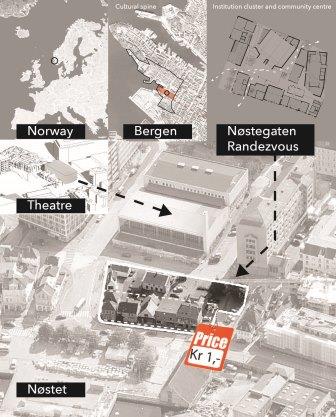
In the ongoing debate about development of Nøstegaten there is no consensus regarding the area development. However, the municipality recently sold the area for Kr 1,- to a developer, Nøstegaten Eiendom, and imposed restoration of the area as a condition for the sale.
This project explores how the 1 kroner deal could be used to create an institutional cluster on a cultural spine consisting of Nøstegaten Randezvous (institutional cluster), the theatre and an upgraded seafront and sea bath.
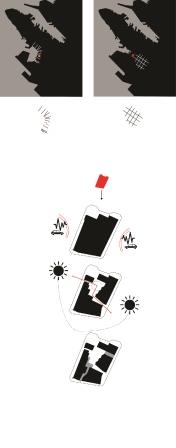
This project finds its sense-making claim in the structure of the urban grid and landscape, social structure and use/program.

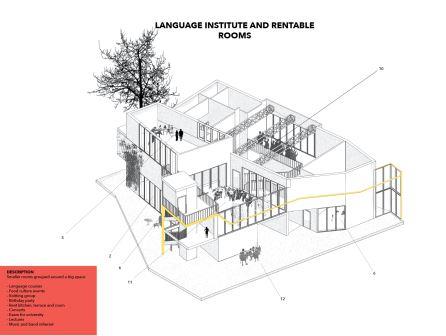
The proposed program for Nøstegaten Randezvous consists of a European language institute, mosque/sport building, start-up offices for rent, Red Cross Homework assistance, Den Grønne Sykkel and a hostel. The various rooms are also available for rent for local inhabitants and organizations.
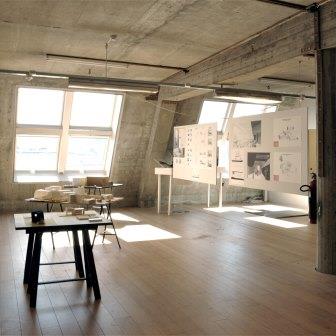
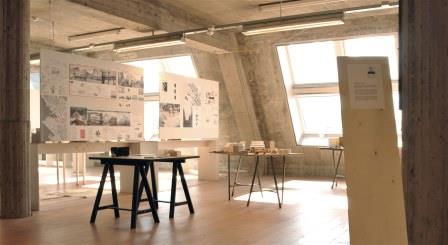
Exhibition
